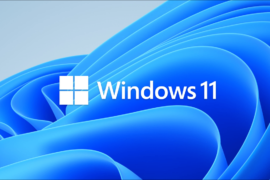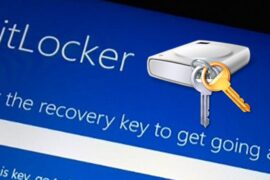This post shows students and new users the steps to install Windows 11 and Ubuntu Linux on a single computer. If you have a Windows 11 installation on your computer and you want to run Ubuntu Linux on the same computer, you will have to set up a dual boot, which means that you will be able to boot Windows 11 and Ubuntu Linux on the same machine, albeit one at a time.
Windows 11, a successor to Windows 10 that was released on October 5, 2021, is becoming the primary Windows operating system. Ubuntu Linux, which is probably the best Linux operating system, is also popular. If you want to run both operating systems at no additional hardware cost, the steps below will show you how.
Installing Windows 11 or Ubuntu Linux is a fairly straightforward process. However, if you want to run both on the same machine, it will take a bit of preparation.
In most cases, you will want to install Windows first and then install Ubuntu later on a separate partition. If Windows 11 occupies the entire partition, you may need to shrink the primary partition, create a new one to install Ubuntu on it.
We will show you how to do it below.
To get started with dual-booting Windows 11 and Ubuntu Linux, follow the steps below.
How to partition hard drive in Windows 11
This post assumes that Windows 11 is already installed and working. If so, log in and create a separate partition to install Ubuntu Linux.
Below is a post that shows you how to create a partition in Windows 11. If Windows occupies the entire partition, you will have to shrink the existing partition and then create a new one for Ubuntu Linux.
How to create a partition in Windows 11
Download and create a bootable Ubuntu USB drive
Once the above partition is created, go ahead and download the Ubuntu Linux ISO image and create a bootable USB drive.
- Ubuntu Linux requires at least 25GB of free storage
- 8GB USB Drive
With your USB drive in hand, download the balenaEtcher application and create a bootable USB drive with the Ubuntu Linux image.
The post below shows you how to do it.
How to create a bootable Ubuntu USB drive
How to boot and install Ubuntu Linux with Windows 11
As you learned how to create a bootable USB drive and partition, we are going to install Ubuntu Linux.
With the Ubuntu Linux bootable USB drive in hand, insert it into your Windows computer, then boot from the USB drive.
Different computers have different ways of specifying where to boot from, find yours. You will most likely press a key when you turn on your computer. Esc, F2, F9, F12 etc.
When your computer boots from the DVD disc or flash drive, you should see a screen similar to below.
Click on the Install Ubuntu to begin the installation. You can try Ubuntu without making changes to your computer, but our goal is to install Ubuntu, so click Install Ubuntu continue.
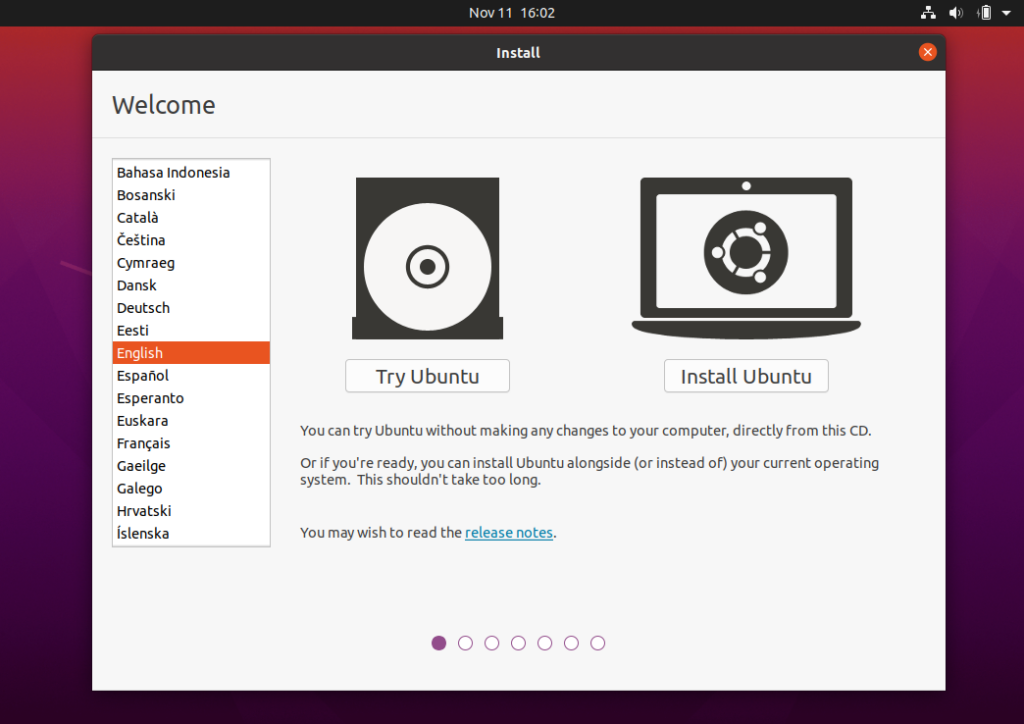
Then select your Keyboard layout. Ubuntu installation selections American English Default keyboard layout. This is a good place to change it if it is not the default. Click Continue to proceed with the installation.

The installation should be preparing to install Ubuntu packages. On the next screen, you are offered the option to Download updates while installing Ubuntu which saves time after installation. and install third-party software for WiFi graphics devices and media codes.
You do not need to select these boxes. However, if you have a stable and reliable Internet connection, you may want to select these options to download important packages while Ubuntu is installing.
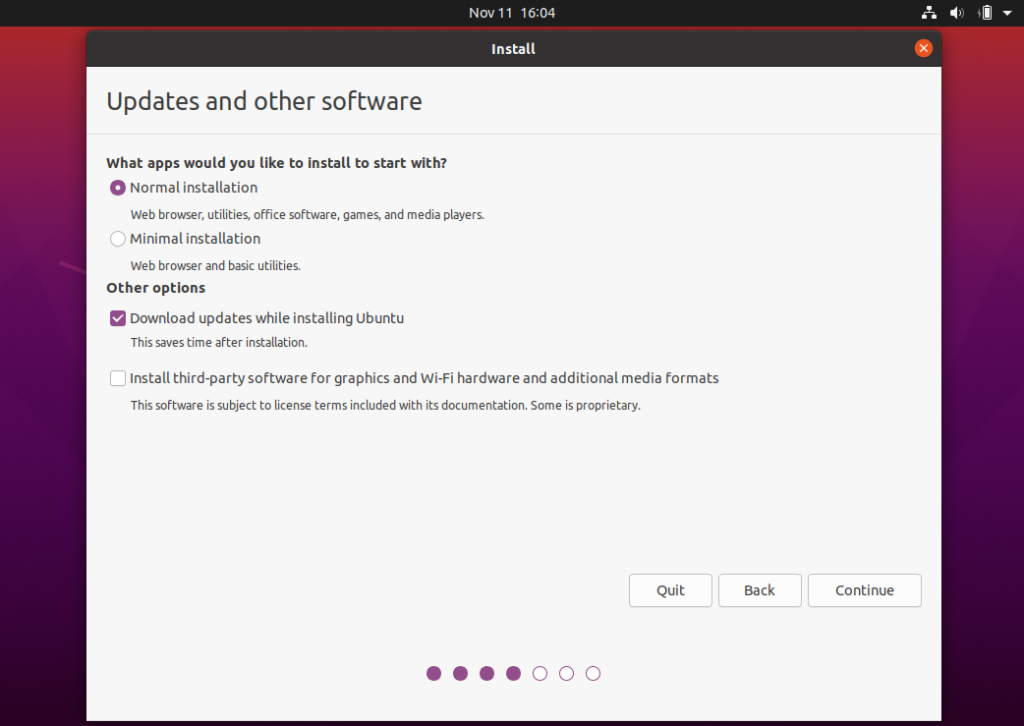
This screen is where you select the type of installation. The first choice for Install Ubuntu alongside Windows 10 is the easiest of them. This will install Ubuntu on the same partition as Windows.
Option 2 Anything else – is to perform a custom installation for advanced users.
For this tutorial, we will select Something Else and choose the partition created earlier in Windows 11.
Click Continue
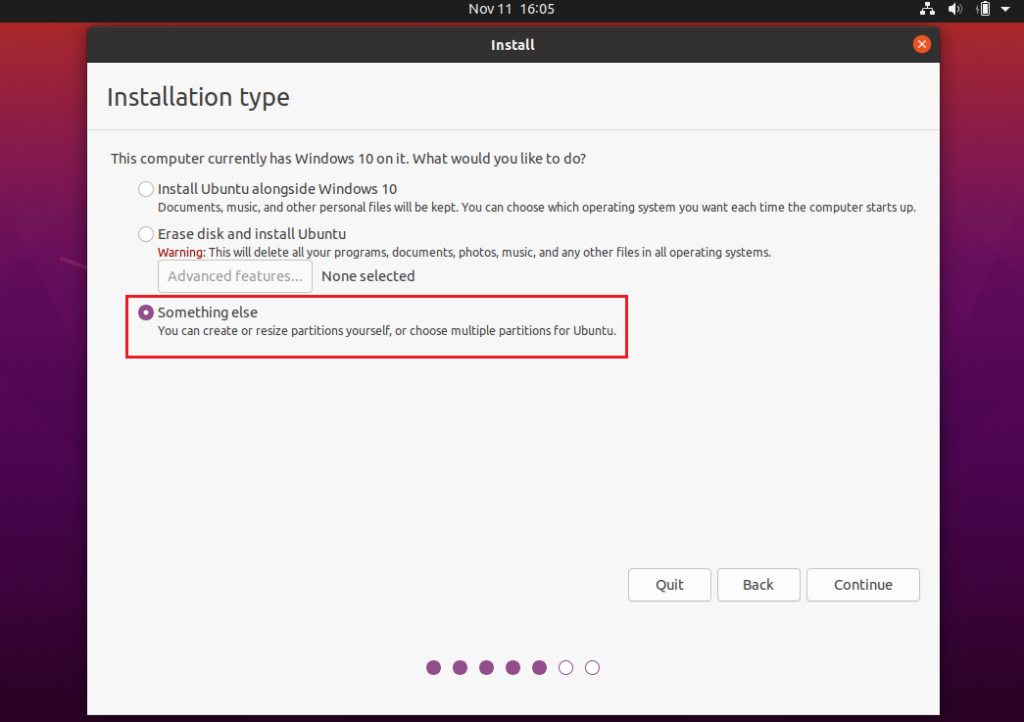
Next, select the partition that was created for Ubuntu Linux and click on the Change button. It should be next after Windows 11 partition.

Then click on the drop-down menu next to Use as: field and select Ext4journalingfilesystem option.

After your selection, click on the Format the partition option. Then use the drop down menu and select the forward slash / What mount point.

Click on the Install Now button after setup.
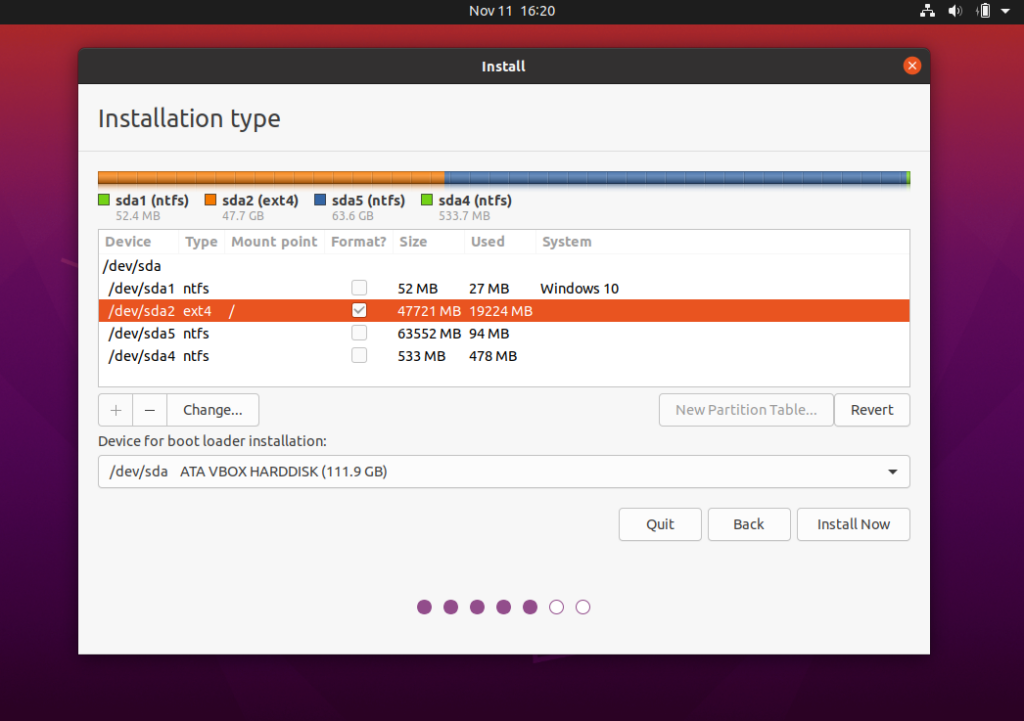
Accept that the installation will erase the hard drive and install Ubuntu on it. click Continuee to move on.

This screen is where you choose your time zone. Enter the name of a city you live in and click Continue.

The next screen is where you enter the first user account and create a name for the computer. Enter your name, username and password and choose if you want to enter a password to always log in. When done, click Continue.
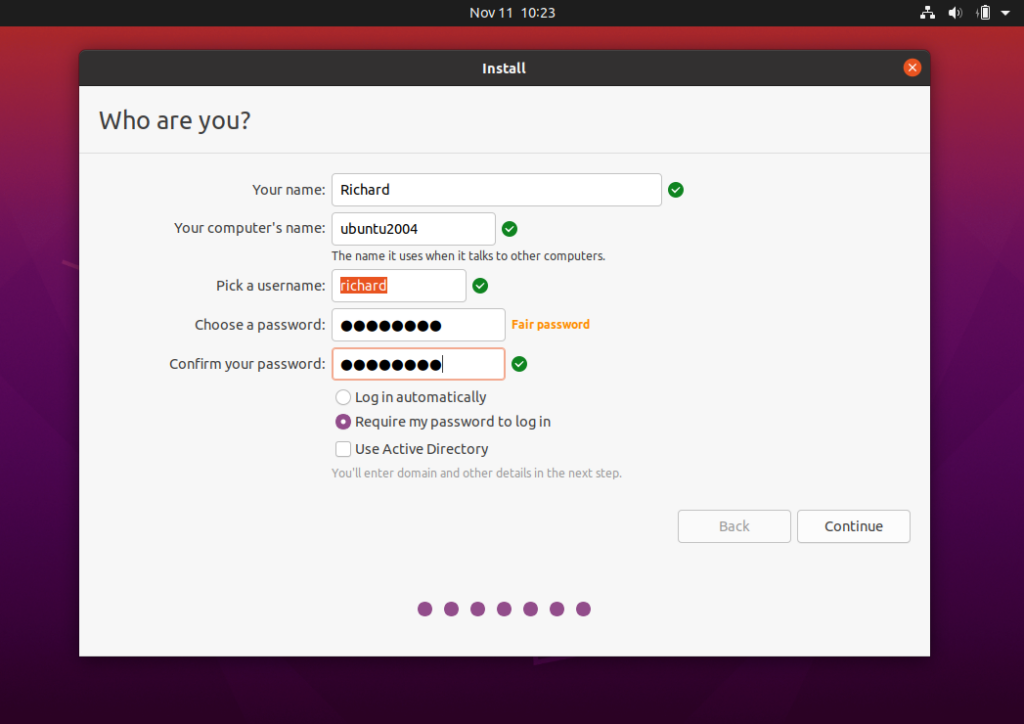
Wait for the installation to complete. this should take around 7 minutes depending on the speed of the computer. When the installation is complete, you will be prompted to reboot.

This is the last screen and the installation is complete. All you have to do is restart your computer, remove the disk from the drive, and log in again.
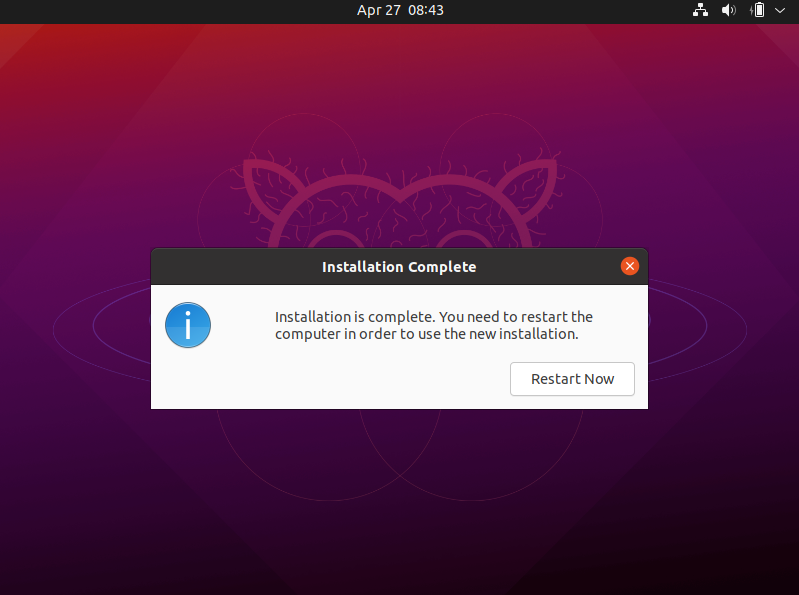
You will be prompted for the login screen after rebooting. Login with the credential created earlier.
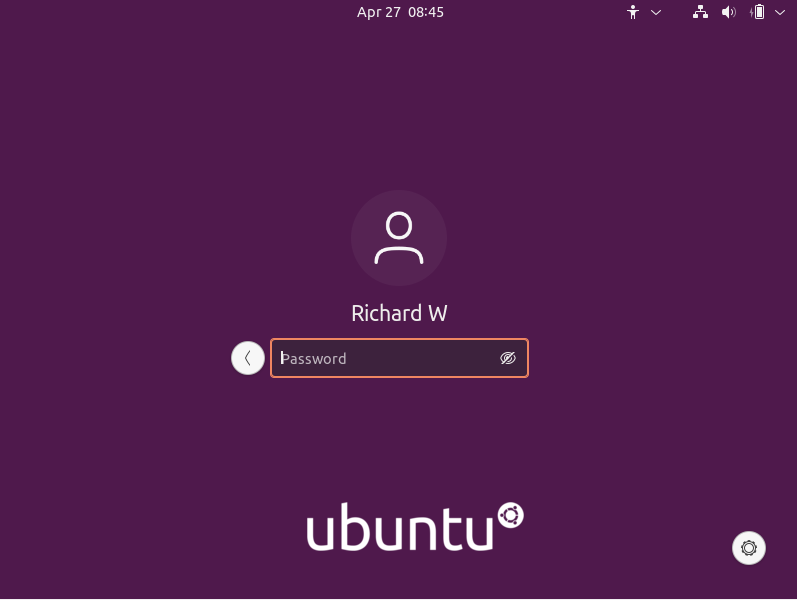
You will have the opportunity to set up online accounts if you have any.
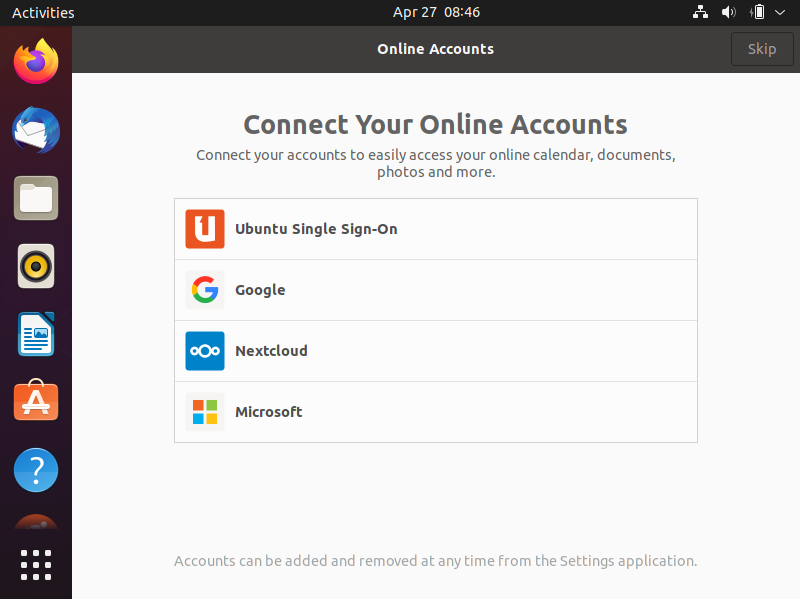
After logging back into Ubuntu, your first task should be to update Ubuntu. After logging in again, you may see a message to install the updates that are available.
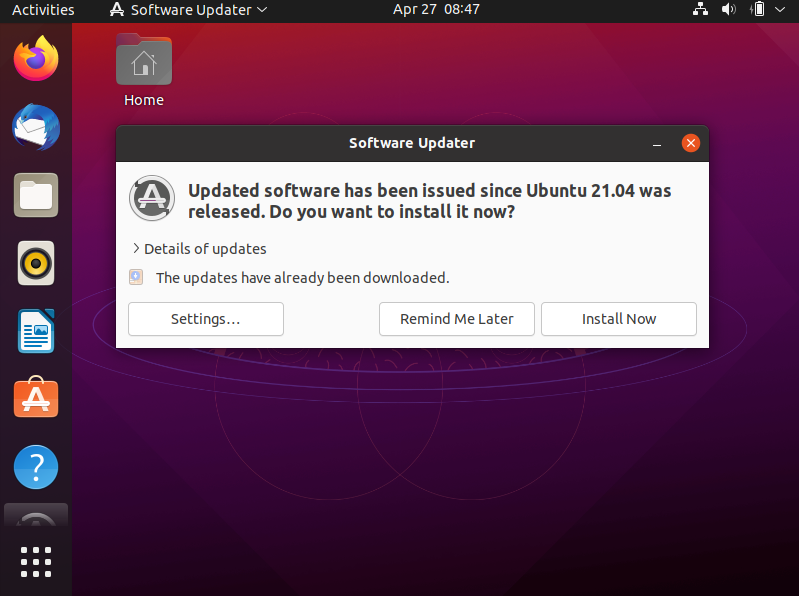
If you see a message, continue under the update from the command line.
press Ctrl - Alt - T on your keyboard open the terminal. Then run the following commands to update Ubuntu.
sudo apt update && sudo apt dist-upgrade && sudo apt autoremove
Reboot one more time and you should be good to go.
Conclusion:
In this tutorial we have seen how to dual boot Windows 11 and Ubuntu Linux. If you find any errors above or have something to add, use the comment form below.

